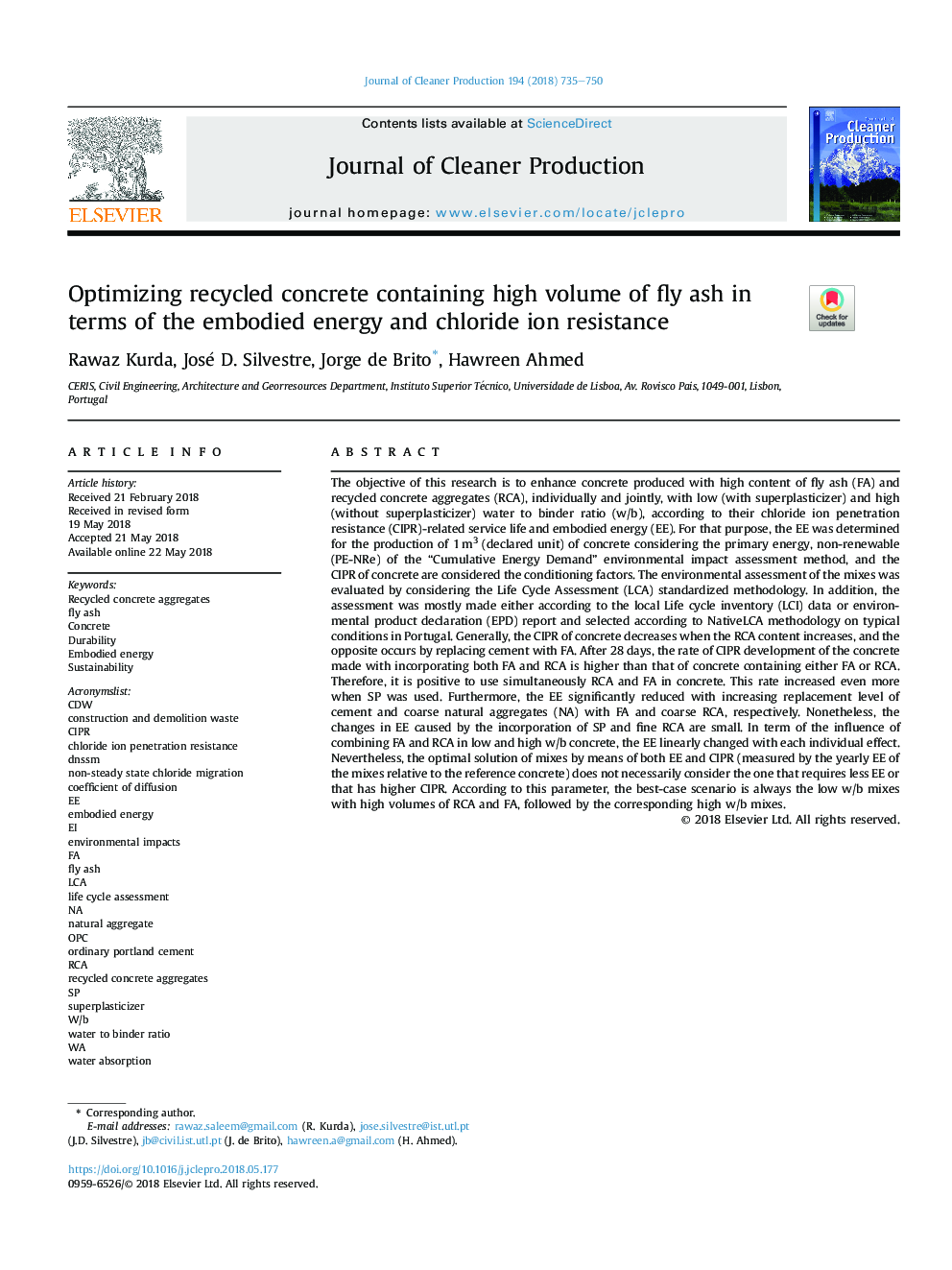| Article ID | Journal | Published Year | Pages | File Type |
|---|---|---|---|---|
| 8094422 | Journal of Cleaner Production | 2018 | 16 Pages |
Abstract
The objective of this research is to enhance concrete produced with high content of fly ash (FA) and recycled concrete aggregates (RCA), individually and jointly, with low (with superplasticizer) and high (without superplasticizer) water to binder ratio (w/b), according to their chloride ion penetration resistance (CIPR)-related service life and embodied energy (EE). For that purpose, the EE was determined for the production of 1â¯m3 (declared unit) of concrete considering the primary energy, non-renewable (PE-NRe) of the “Cumulative Energy Demand” environmental impact assessment method, and the CIPR of concrete are considered the conditioning factors. The environmental assessment of the mixes was evaluated by considering the Life Cycle Assessment (LCA) standardized methodology. In addition, the assessment was mostly made either according to the local Life cycle inventory (LCI) data or environmental product declaration (EPD) report and selected according to NativeLCA methodology on typical conditions in Portugal. Generally, the CIPR of concrete decreases when the RCA content increases, and the opposite occurs by replacing cement with FA. After 28 days, the rate of CIPR development of the concrete made with incorporating both FA and RCA is higher than that of concrete containing either FA or RCA. Therefore, it is positive to use simultaneously RCA and FA in concrete. This rate increased even more when SP was used. Furthermore, the EE significantly reduced with increasing replacement level of cement and coarse natural aggregates (NA) with FA and coarse RCA, respectively. Nonetheless, the changes in EE caused by the incorporation of SP and fine RCA are small. In term of the influence of combining FA and RCA in low and high w/b concrete, the EE linearly changed with each individual effect. Nevertheless, the optimal solution of mixes by means of both EE and CIPR (measured by the yearly EE of the mixes relative to the reference concrete) does not necessarily consider the one that requires less EE or that has higher CIPR. According to this parameter, the best-case scenario is always the low w/b mixes with high volumes of RCA and FA, followed by the corresponding high w/b mixes.
Keywords
Related Topics
Physical Sciences and Engineering
Energy
Renewable Energy, Sustainability and the Environment
Authors
Rawaz Kurda, José D. Silvestre, Jorge de Brito, Hawreen Ahmed,
